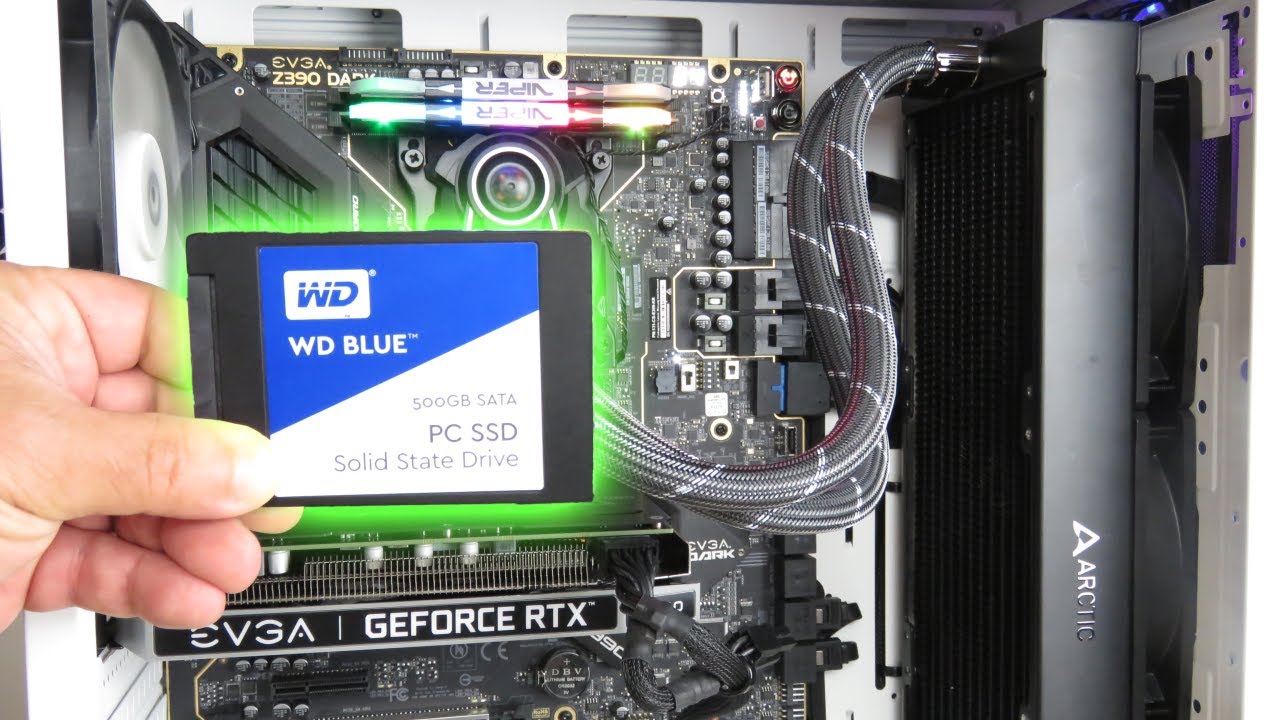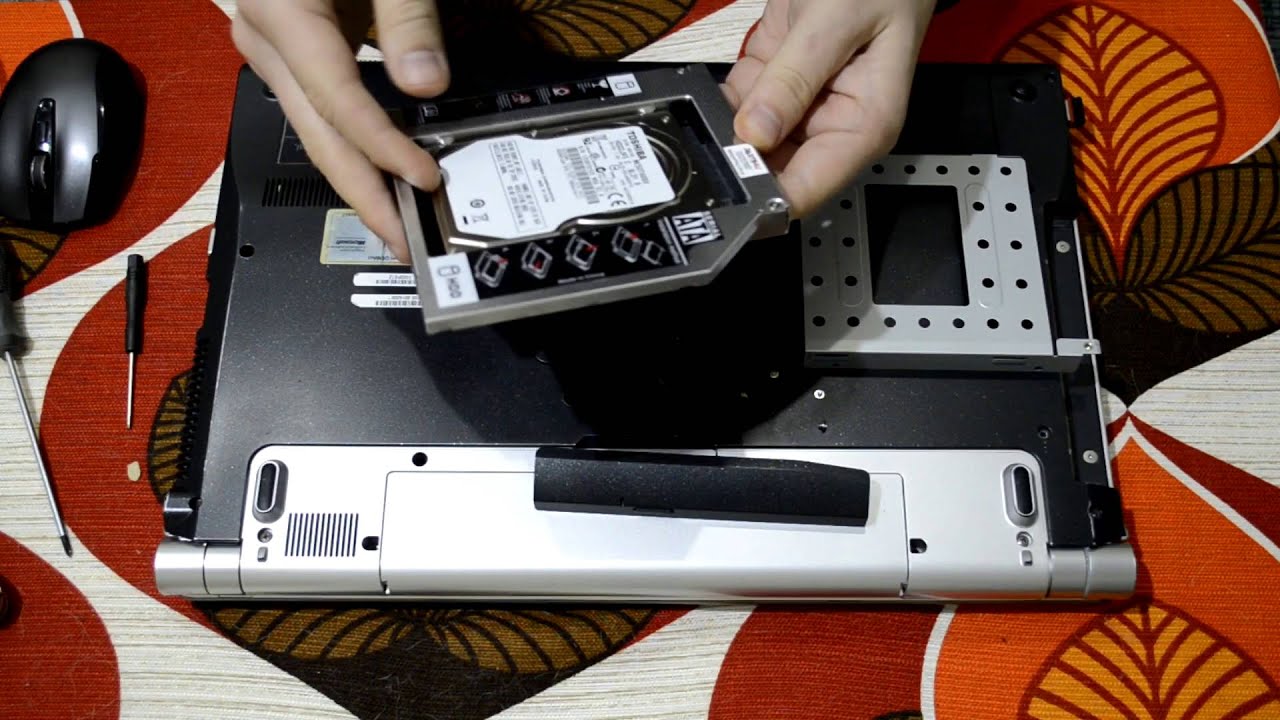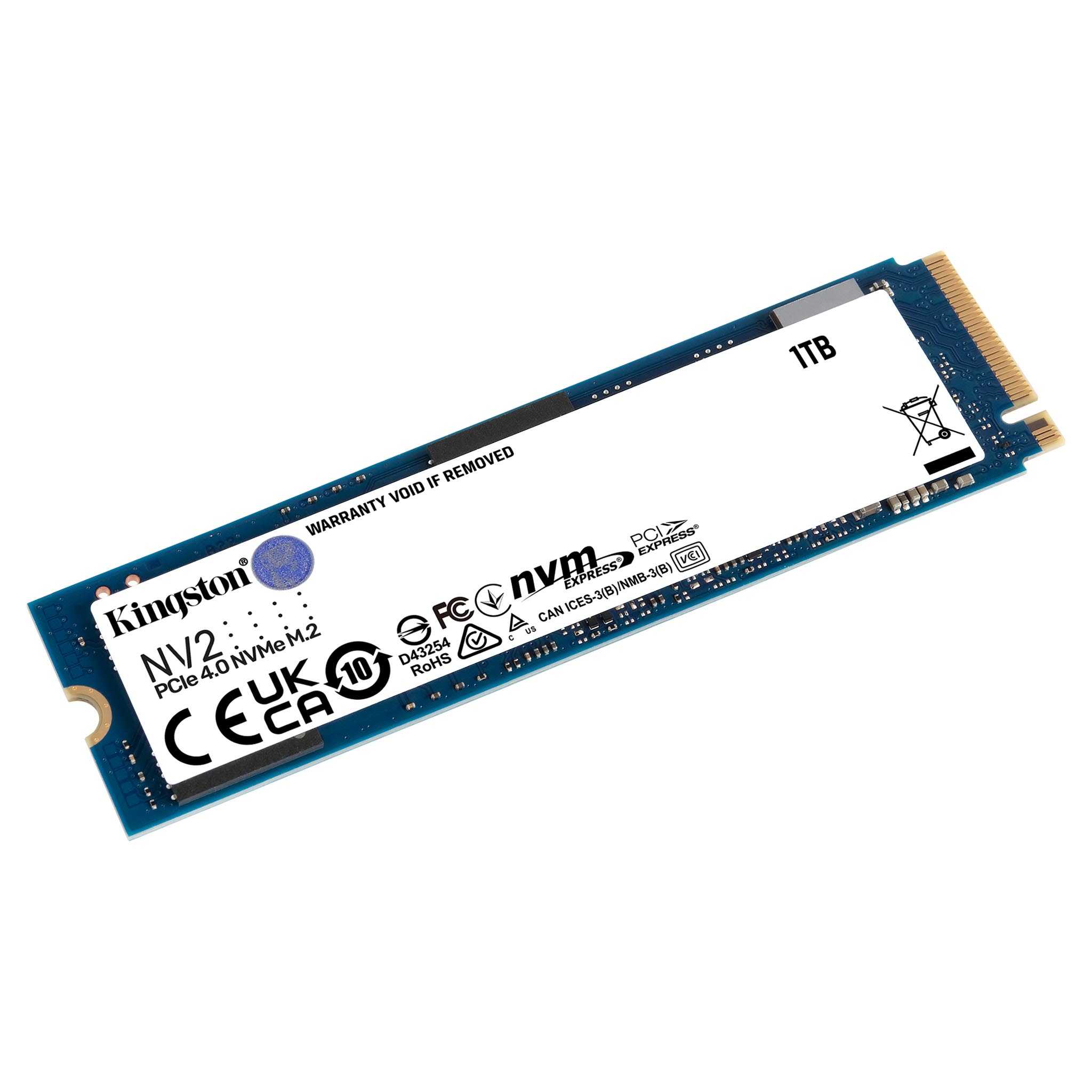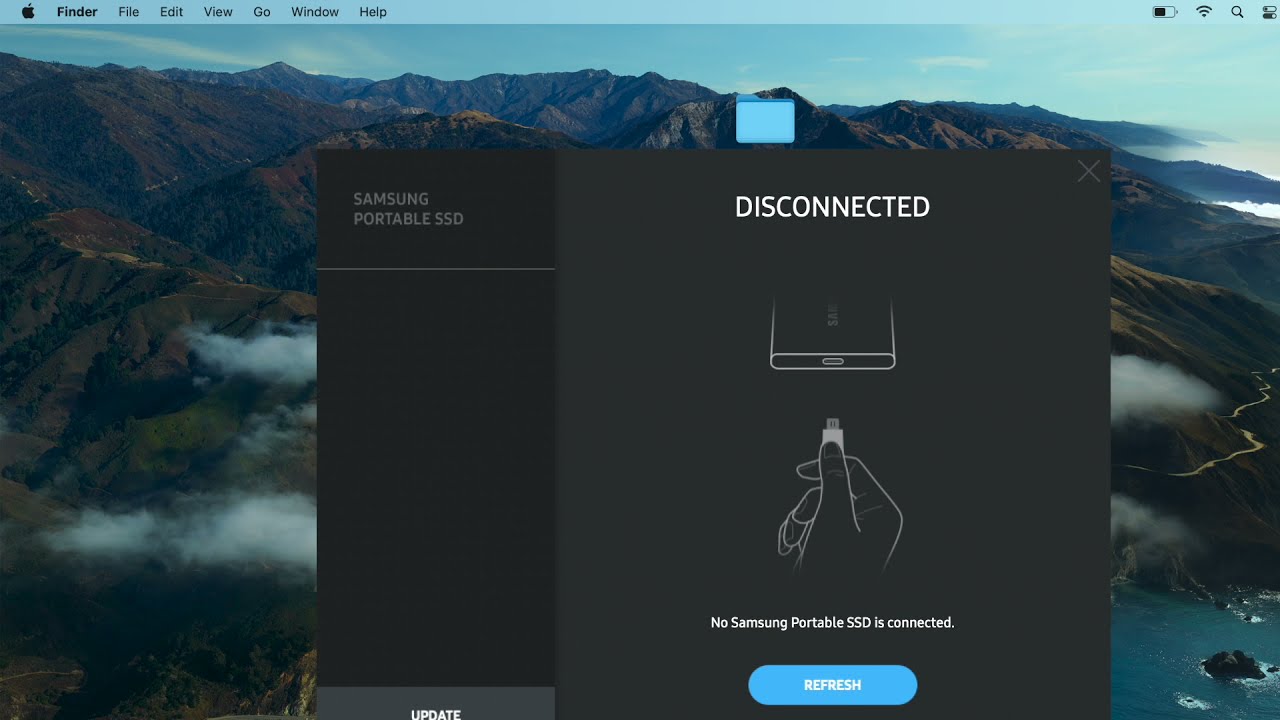Why SSD is important for your computer
An SSD, or solid-state drive, is a vital component for enhancing the performance and speed of your computer. Unlike traditional mechanical hard drives, which rely on spinning disks and moving parts, SSDs use flash memory to store data. This allows for faster access times, quicker boot-ups, and improved overall system responsiveness. There are several reasons why an SSD is important for your computer.
Firstly, an SSD can significantly reduce the amount of time it takes for your operating system to start up. With traditional hard drives, the boot time can be quite lengthy as the mechanical parts need to spin up and read the data. However, with an SSD, the operating system loads much faster, allowing you to get to work or play games sooner.
Additionally, SSDs offer faster data transfer speeds, which can greatly benefit tasks that involve reading or writing large files. Whether you are editing videos, transferring large media files, or working with complex computer-aided design (CAD) software, an SSD will make these processes smoother and more efficient, saving you precious time.
In terms of gaming, an SSD can significantly improve loading times and reduce in-game stuttering. Games nowadays are becoming more demanding in terms of storage requirements, and an SSD ensures that the game files are accessed quickly, resulting in a seamless gaming experience. You will no longer have to endure long loading screens or laggy gameplay.
Moreover, an SSD is more durable and reliable than traditional hard drives. Since SSDs do not have any moving parts, they are less susceptible to mechanical failure. This means your data is better protected, and you are less likely to experience data loss due to a hard drive failure.
Lastly, if you are concerned about power consumption, SSDs are more energy-efficient than mechanical hard drives. This increases your laptop’s battery life, allowing you to use your computer for longer periods without needing to recharge.
In summary, an SSD is crucial for improving your computer’s performance, speed, and overall user experience. Whether you are a gamer, professional, or casual user, the benefits of an SSD are undeniable. It is an investment that will enhance your productivity, streamline your tasks, and provide a more enjoyable computing experience.
What to consider before putting files on your SSD
While SSDs offer numerous advantages in terms of speed and performance, it is essential to consider certain factors before deciding what files to store on your SSD. Optimizing the usage of your SSD can help prolong its lifespan and maximize its effectiveness. Here are some considerations to keep in mind:
1. Prioritize frequently accessed files: Since SSDs are known for their fast access times, it is best to store files that you frequently access on your SSD. This includes your operating system, frequently used applications, and games that you play frequently. By placing these files on your SSD, you will notice a considerable improvement in load times and overall system responsiveness.
2. Consider the size of your SSD: SSDs tend to have limited storage capacity compared to traditional hard drives. Therefore, it is crucial to evaluate the available space on your SSD and prioritize files that require faster access. Reserve the SSD for important files, while larger media files, archives, and backups can be stored on an external hard drive or cloud storage.
3. Be mindful of write cycles: Unlike mechanical hard drives, SSDs have a limited number of write cycles. This means that repeatedly rewriting data to the SSD can contribute to the wear and tear of the drive. To minimize unnecessary wear, avoid storing temporary files, caches, or excessive logging on your SSD. You can redirect these files to a secondary storage drive or configure your system to use RAM for caching purposes.
4. Consider the type of files: SSDs are best suited for storing small and frequently accessed files. As such, it is recommended to keep operating system files, application files, and program files on the SSD. On the other hand, media files, such as photos, videos, and music, which are typically larger in size, can be stored on a secondary storage device.
5. Regularly clean up your SSD: Over time, your SSD may accumulate temporary files, junk files, or unused applications. Performing regular file clean-ups and organizing your files can help maintain optimal performance on your SSD. Additionally, you may want to consider enabling TRIM functionality, which helps to optimize the storage space and efficiency of your SSD.
By considering these factors, you can ensure that your SSD is utilized effectively and efficiently. Prioritizing frequently accessed files, managing storage space, being mindful of write cycles, considering file types, and regularly cleaning up your SSD will help prolong its lifespan and maintain its performance over time.
Essential system files for optimal performance
When it comes to maximizing the performance of your SSD, it’s crucial to identify and prioritize the essential system files. These files play a significant role in the overall functionality of your computer and can greatly impact its speed and responsiveness. Here are some essential system files to consider storing on your SSD:
1. Operating system: One of the most critical files to store on your SSD is the operating system. This includes the Windows, macOS, or Linux system files. Placing the operating system on the SSD ensures faster boot times, quicker system updates, and improved overall responsiveness. The SSD’s fast read and write speeds allow the operating system to load quickly, enabling you to get to work or play games without unnecessary delays.
2. Application files: Storing frequently used applications on your SSD can significantly enhance their performance. These can include productivity tools, media players, web browsers, and any other applications you use on a daily basis. By having these files on the SSD, they can launch faster and run more smoothly, allowing you to work or enjoy multimedia content with minimal waiting time.
3. Program files: If you use any resource-intensive software such as video editing tools, graphic design software, or computer-aided design (CAD) applications, it is recommended to store their program files on the SSD. These files often contain program code, settings, and libraries that are accessed frequently during their execution. Having them on the SSD can help reduce lag, improve rendering speeds, and overall enhance the performance of these software programs.
4. System cache and temporary files: System cache and temporary files are created by the operating system and various applications to improve performance. These files are typically accessed frequently and benefit from the speed of an SSD. Storing them on your SSD can help speed up system operations and reduce the time it takes to load system resources and temporary data.
5. Page file or swap space: The page file, also known as swap space on Linux systems, is a portion of the hard drive that the operating system uses as virtual memory. By default, it is stored on the system drive. Moving the page file to the SSD can lead to faster read and write times, resulting in improved system performance, especially when dealing with memory-intensive tasks or running multiple applications simultaneously.
By prioritizing these essential system files on your SSD, you can optimize the performance of your computer. Faster boot times, quicker application launches, improved system responsiveness, and smoother multitasking are just a few benefits you can expect. Remember to regularly update these files and perform system maintenance tasks to ensure optimal performance over time.
Frequently accessed programs and applications
When it comes to optimizing the performance of your SSD, considering the storage of frequently accessed programs and applications is crucial. By placing these files on your SSD, you can ensure faster load times and smooth operation, enhancing your overall computing experience. Here are some frequently accessed programs and applications to consider storing on your SSD:
1. Web browsers: Web browsers are undoubtedly one of the most frequently used applications for many users. Whether you’re browsing the internet for work or leisure, storing your preferred web browser on your SSD will result in quicker startup times and webpage loading. With an SSD, you’ll notice improved responsiveness when opening multiple tabs, running web-based applications, or streaming media content.
2. Office productivity suites: Applications like Microsoft Office, Google Docs, or Apple iWork are widely used for creating and editing documents, spreadsheets, and presentations. Storing these productivity suites on your SSD allows for faster access to your files and smoother application performance. You’ll experience reduced lag when opening and saving documents, collaborating in real-time, or performing complex data calculations.
3. Photo and video editing software: If you frequently work with photo and video editing software such as Adobe Photoshop, Lightroom, Premiere Pro, or Final Cut Pro, storing these applications on your SSD is highly beneficial. The fast read and write speeds of the SSD enhance the loading and saving of large media files, resulting in faster rendering and smoother editing workflows.
4. Gaming platforms and games: If you’re an avid gamer, you’ll appreciate the improved gaming experience that an SSD provides. Storing gaming platforms like Steam, Origin, or GOG on the SSD ensures faster loading times, reduced in-game stuttering, and overall smoother gameplay. Additionally, installing frequently played games on the SSD allows for quicker access to game assets and faster level loading, enhancing your gaming experience.
5. Media players and streaming applications: If you regularly watch movies, stream music, or enjoy online content, storing media players like VLC, iTunes, or Spotify on your SSD offers faster launch times and smoother playback. The SSD’s faster read speeds eliminate buffering delays and ensure seamless media streaming, providing you with uninterrupted entertainment.
By prioritizing the storage of these frequently accessed programs and applications on your SSD, you’ll notice significant improvements in loading times and overall performance. The enhanced speed and responsiveness of your system will allow you to be more productive, enjoy smoother multimedia experiences, and have a seamless gaming experience.
Operating system files and directories
When considering what files to put on your SSD, it is essential to prioritize the storage of operating system (OS) files and directories. These integral components of your computer’s operating system are responsible for its overall functionality and performance. By storing them on your SSD, you can experience faster boot times, quicker system updates, and improved responsiveness. Here are some key operating system files and directories to consider:
1. System files: The system files include essential components of the operating system, such as the Windows System32 folder or the macOS /System folder. These files contain critical system libraries, drivers, and configurations. Storing these files on your SSD ensures faster access and loading times, resulting in a snappier system performance.
2. Registry files (Windows): The Windows Registry is a centralized database that stores configuration settings, options, and system information. It plays a crucial role in the smooth operation of your OS. By placing the registry files on your SSD, you can speed up the registry access and improve the overall responsiveness of your system.
3. User directories: Your user directory contains personal files, settings, and preferences specific to your user account. This includes folders such as Documents, Pictures, Music, and Downloads. Storing your user directories on the SSD ensures faster access to your files and a snappier user experience when navigating directories or performing file operations.
4. System cache: The system cache is a temporary storage area that keeps frequently accessed data to improve system performance. By default, the cache is often stored on the system drive. Storing the system cache on your SSD allows for faster caching operations, resulting in improved system responsiveness and reduced data retrieval times.
5. Virtual memory file: The virtual memory file, also known as the page file on Windows or swap space on Linux, is used as a supplement to the physical RAM. Storing the virtual memory file on your SSD ensures quicker read and write times, enhancing system performance, especially when dealing with memory-intensive tasks or running multiple applications simultaneously.
By storing these operating system files and directories on your SSD, you can significantly enhance the performance of your computer. Faster boot times, quicker access to system resources, and improved overall responsiveness are just a few of the benefits you can expect. Keep in mind that regularly updating and maintaining these files and directories is essential to ensure optimal performance over time.
Game installations and saves
If you are a gaming enthusiast, you know how important it is to have optimal performance for your games. Storing game installations and saves on your SSD can significantly enhance your gaming experience. Not only will your games load faster, but you’ll also experience reduced in-game stuttering and smoother gameplay. Here are some reasons why you should consider putting your game files on your SSD:
1. Faster loading times: One of the primary benefits of storing game installations on your SSD is faster loading times. SSDs offer faster read speeds compared to traditional hard drives, ensuring that game assets are accessed and loaded quickly. Whether you are playing a massive open-world RPG or a fast-paced multiplayer shooter, an SSD will drastically reduce the time you spend waiting for the game to load.
2. Reduced in-game stuttering: In-game stuttering can be an issue for gamers, especially when the game needs to load assets on the fly. By storing your game files on an SSD, the data retrieval process is much faster, resulting in smoother gameplay with fewer performance hiccups. This allows you to fully immerse yourself in the game without interruptions caused by sudden drops in frame rates or lag.
3. Improved game asset streaming: Many modern games utilize an asset streaming technique, where the game loads assets in real-time as you play. This includes textures, models, sound effects, and more. With an SSD, the asset streaming process becomes significantly faster, reducing the pop-in effect and ensuring a more immersive gaming experience.
4. Quicker game updates: Game updates and patches can be quite large in size, and downloading and installing them can take a significant amount of time. By storing your game installations on an SSD, the updates can be processed and installed much faster, getting you back into the game sooner without having to wait for lengthy update procedures.
5. Protected game saves: Game saves are valuable to gamers as they represent progress and achievements. Storing game saves on your SSD ensures not only faster access but also better protection against data loss. SSDs have no moving parts, making them more resistant to mechanical failures and offering a higher level of data security compared to traditional hard drives.
By putting your game installations and saves on your SSD, you can unlock the full potential of your gaming experience. Faster loading times, reduced in-game stuttering, improved asset streaming, quicker updates, and protected game saves are just a few of the benefits you can enjoy. The seamless performance and enhanced gameplay will allow you to fully immerse yourself in the virtual worlds of your favorite games.
Media files and documents
When it comes to storing media files and documents, it is essential to consider the balance between speed and storage capacity. Although media files such as photos, videos, and music can take up a significant amount of space, storing them on your SSD can still offer advantages in terms of faster access and improved performance. Additionally, keeping important documents on your SSD ensures quick retrieval when you need them. Here are some reasons why you should consider storing media files and documents on your SSD:
1. Fast access to media files: SSDs are known for their fast read speeds, making them ideal for accessing media files quickly. Whether you’re browsing through your photo library, streaming videos, or listening to music, storing these files on your SSD ensures near-instant access and eliminates any delays or buffering experienced with traditional hard drives.
2. Smooth multimedia playback: Media files, especially high-resolution videos and large audio files, can require significant processing power to play smoothly. By storing your media files on an SSD, the fast read speeds ensure that the system can retrieve and process the data quickly, resulting in smooth and uninterrupted playback without lag or stuttering.
3. Efficient media editing: If you work with media editing software such as Adobe Photoshop, Premiere Pro, or Lightroom, storing media files on your SSD can greatly enhance your workflow. The fast read and write speeds of SSDs enable quicker access and saving of media files, leading to faster rendering times and improved editing efficiency.
4. Quick retrieval of important documents: Storing important documents on your SSD ensures that they are easily accessible whenever you need them. Whether it’s work-related documents, school assignments, or personal files, having them on your SSD means you can open, edit, and save them quickly, enhancing your productivity and saving valuable time.
5. Backup convenience: SSDs can serve as a convenient backup location for your media files and documents. By regularly backing up your files to the SSD, you ensure that they are protected from data loss. The fast read and write speeds of an SSD make the backup process quicker, allowing you to safeguard your important data efficiently.
While SSDs may have limited storage capacities compared to traditional hard drives, considering the storage of media files and important documents on your SSD can greatly enhance your digital lifestyle. The benefits of faster access, smooth multimedia playback, efficient media editing, quick retrieval of documents, and convenient backups make SSDs a valuable tool for managing and enjoying your media files and documents.
Caching and temporary files
Caching and temporary files are an integral part of the computing experience, as they facilitate faster access to frequently used data and improve system performance. While these files are temporary in nature, storing them on your SSD can offer significant benefits in terms of speed and responsiveness. Here’s why you should consider storing caching and temporary files on your SSD:
1. Accelerated system operations: Caching refers to the process of storing frequently accessed data in a cache memory for quicker access. By storing caching files on your SSD, you can significantly speed up system operations such as booting, launching applications, and opening frequently visited websites. The fast read and write speeds of SSDs ensure that cached data is readily available, resulting in accelerated system performance.
2. Enhanced browsing experience: Web browsers often utilize caching to store webpage elements, such as images, scripts, and stylesheets, locally on your computer. By storing the browser cache on your SSD, your internet browsing experience can be noticeably faster. Pages that you have visited before will load more quickly, as the browser can retrieve the cached data from the SSD instead of sending requests over the internet.
3. Faster application loading: Many applications generate temporary files during their operation to store settings, recent document lists, or temporary data. By storing these temporary files on your SSD, the application can load these files quickly, leading to faster application startup times and improved overall responsiveness. This is especially beneficial for resource-intensive applications such as video editing software or 3D modeling tools.
4. Improved system responsiveness: Temporary files and system caches help improve system responsiveness by reducing the need to retrieve data from slower storage devices. By storing these files on your SSD, your computer can quickly access and process temporary data, resulting in a more fluid and responsive user experience. Tasks like searching for files, opening large documents, or managing file operations will feel smooth and seamless.
5. Efficient memory management: SSDs can serve as a faster storage location for virtual memory or page files. Virtual memory is used by the operating system when the physical RAM is full. If you store the page file on your SSD, your computer can quickly retrieve and write data from the SSD, improving overall system performance, especially when dealing with memory-intensive tasks or multiple open applications.
By storing caching and temporary files on your SSD, you can harness the full potential of the fast read and write speeds offered by these drives. The enhanced system operations, improved browsing experience, faster application loading, better system responsiveness, and efficient memory management contribute to a smoother and more enjoyable computing experience.
Personal files and folders
Your personal files and folders contain valuable and irreplaceable data that is important to you. While personal files such as photos, documents, and videos may not require the same level of speed as system files or frequently accessed programs, storing them on your SSD can still offer advantages in terms of accessibility and data security. Here’s why you should consider storing your personal files and folders on your SSD:
1. Quick access to important files: Storing personal files and folders on your SSD ensures quick access to your important data. Whether they are work-related documents, family photos, or personal projects, having them on your SSD allows for faster opening, editing, and saving of these files. You no longer have to wait for traditional hard drives to spin up and locate the files you need; the SSD allows you to access them almost instantly.
2. Improved search and file management: SSDs offer faster search capabilities for your personal files. When you use the search function within your operating system to locate specific files or folders, the SSD’s fast read speeds enable quicker scanning and retrieval of the search results. Additionally, file operations such as copying, moving, and deleting files are executed almost instantaneously on an SSD, enhancing your file management experience.
3. Enhanced data security: SSDs have no moving parts, which means they are more resistant to mechanical failures compared to traditional hard drives. By storing your personal files on an SSD, you mitigate the risk of data loss due to physical damage or mechanical failure. This adds an extra layer of protection to your valuable files, ensuring that your personal memories and important documents are safeguarded.
4. Reliable backups: Making backups of your personal files and folders is crucial for data security. SSDs provide a reliable storage medium for backing up your files, thanks to their faster read and write speeds. Whether you choose to back up your files to an external SSD or create regular image backups on your main SSD, the process will be quicker and more efficient, ensuring that your important data is protected.
5. Portability and convenience: SSDs are lightweight and compact, making them ideal for carrying your personal files with you wherever you go. Whether you need to bring work documents for a meeting or enjoy your media files on a different device, you can easily transfer your SSD and have your files readily available, without the need for internet access or cumbersome external drives.
By storing your personal files and folders on an SSD, you can enjoy quick access to important data, improved search and file management, enhanced data security, reliable backups, and the convenience of portability. With the added speed and reliability provided by an SSD, you can efficiently manage and enjoy your personal files while ensuring their safety and accessibility.
Backing up your SSD
Backing up your SSD is essential to ensure the safety and preservation of your important files and data. Despite the high reliability of SSDs, unforeseen events such as hardware failure, accidental deletion, or malware can result in data loss. Having a backup strategy in place will provide you with peace of mind and an easy recovery solution in case of emergencies. Here are some reasons why backing up your SSD is crucial:
1. Data protection: Storing backups of your SSD safeguards your data from various risks such as hardware failures, power surges, malware attacks, or accidental deletions. By creating regular backups, you ensure that your valuable files and personal data are safe and can be recovered without the risk of permanent loss.
2. Quick data recovery: Having a backup allows for quick and efficient data recovery in the event of a system failure or data loss. Rather than spending countless hours trying to recover data or starting from scratch, you can restore your backed-up files to a new or repaired SSD, minimizing downtime and enabling you to resume your work or activities promptly.
3. Version control and file history: Backing up your SSD can provide the advantage of version control and file history. By using backup software that supports versioning, you can store multiple versions of your files or folders. This allows you to roll back to a previous version of a file or retrieve a deleted file that may still be needed, providing additional flexibility and ensuring that you don’t lose important changes or updates.
4. Protection against ransomware: Ransomware attacks have become increasingly prevalent, with cybercriminals encrypting your files and demanding payment for their release. By regularly backing up your SSD, you have an unaffected copy of your data that can be restored without having to pay the ransom. This way, you can confidently navigate such threats and protect your data integrity.
5. Easy migration to a new SSD: Backing up your SSD is particularly beneficial when you want to upgrade to a larger or faster SSD. By creating a backup of your existing SSD, you can easily transfer your data and settings to the new drive without the need to reinstall applications or transfer files manually. This simplifies the migration process and saves you time and effort.
There are various methods available for backing up your SSD, including cloud-based backup services, external hard drives, network-attached storage (NAS), or dedicated backup software. Regardless of the method you choose, the key is to create regular backups and ensure that your most important files and data are effectively protected.
Remember, a reliable backup of your SSD provides peace of mind and protects your important data from unexpected events. It allows for quick recovery, ensures version control and file history, offers ransomware protection, and simplifies the migration to a new SSD. Prioritize backing up your SSD to maintain the safety and availability of your precious data.
Conclusion
In today’s digital world, the use of SSDs has become increasingly prevalent due to their exceptional speed, reliability, and performance benefits. When deciding what to put on your SSD, it is important to consider various factors to maximize its effectiveness and optimize your computing experience.
By prioritizing certain files and applications on your SSD, you can unleash the full potential of this powerful storage device. This includes storing frequently accessed programs and applications to enhance speed and responsiveness, prioritizing essential operating system files for optimal performance, and considering game installations and saves to improve loading times and gaming experience.
Furthermore, storing media files and documents on your SSD allows for quick access to your valuable content and smooth multimedia playback. Storing caching and temporary files on your SSD accelerates system operations and improves overall responsiveness. Additionally, keeping personal files and folders on your SSD ensures quick access, better file management, data security, and reliable backups.
Finally, backing up your SSD is essential to protect your data from potential loss or damage. By creating regular backups, you can ensure peace of mind, quick data recovery, version control, ransomware protection, and easy migration to a new SSD when needed.
In conclusion, understanding what to put on your SSD and considering the specific needs of your computer usage play a vital role in optimizing its performance and functionality. By making strategic choices and implementing a comprehensive backup strategy, you can make the most of your SSD and enjoy the benefits of speed, reliability, and improved computing experience.

























